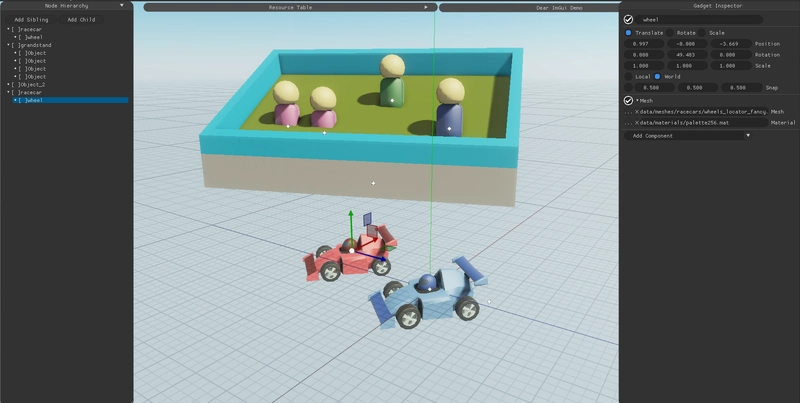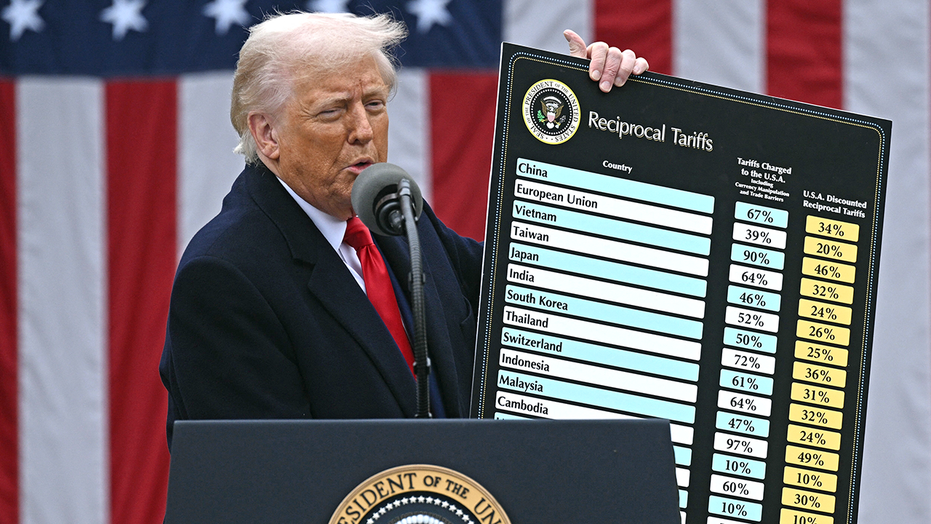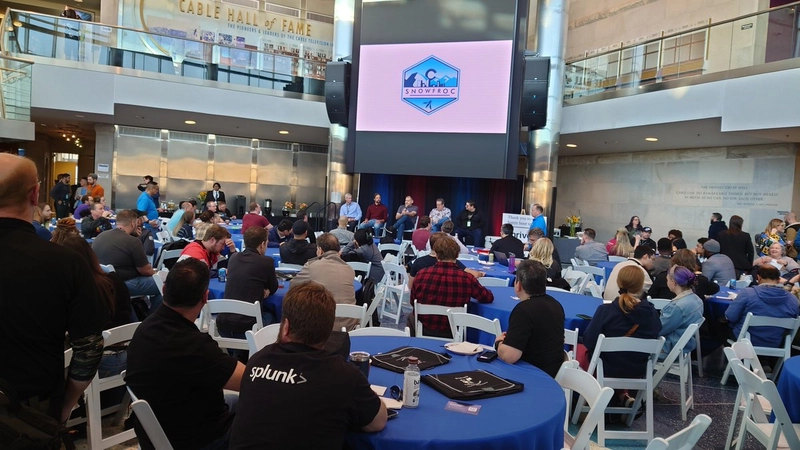Prefab System: Easy in Unity, I Built Mine the Hard Way
I have tackled one of the most challenging pieces of tech encountered in my 20 years of making games; a prefab system for a custom level editor I call Track Builder. This was programmed live on stream showing every step of the process. I share my experiences so you can feel the pains and triumphant moments while learning a few things along the way. Grab a cup of your favorite beverage and enjoy. The articles in this series will cover a lot of technical ground including bits like; Leveraging the compiler to prevent mixing different types of UUIDs. Creating custom iterators for more maintainable code. A newbie’s experience at test driven development. Saving and loading while keeping backwards compatibility. Unexpected issues when using the system for the first time. 1. What IS a Prefab System? Before we get started I’d like to ensure we both have the same idea of what a prefab system is. If you’re a game developer and have used prefabs in Unity, feel free to skip down to why. Many modern game engines notably Unity/Godot/Unreal allow game developers to design levels using a hierarchy of objects. Complex objects can be built from many other objects, like a cup can be a child object of a table which is a child object of a room and... Unity allows you to save these objects to a separate file known as a prefab which can be considered like an extremely powerful copy and paste mechanism. Imagine you created an object to represent a wheel, containing a mesh or two for the rim & tire, material details and so on. By saving this object as a prefab you can place instances of the prefab for each wheel of the car, or even an 18-wheeler! Now when you change a property in the prefab all 4 (or 18) wheels are instantly modified. This can be a huge time saver. “Prefabs can be considered like an extremely powerful copy and paste mechanism.” The best part is, prefabs can be built from other prefabs, and the properties can be overridden for specific instances when desired. If I’ve lost you, let’s say when you created the prefab there was a property to describe the tire pressure and you set this value to a typical 35 psi (2.4 bar). The developer has the option to select the front-left tire and modify it to a lower 20 psi (1.4 bar) which will override any default the prefab sets. Any time the prefab changes the other three tires updates, but the front-left will remain 20 psi (1.4 bar). This barely scratches the surface of this amazing system, but I hope your imagination can see the wild range of possibilities. Suffice to say this system can give developers a huge lever to help save time with development. But first I already hear the number one question many people have; if Unity or other engines are supporting this why not use one? 2. Why WRITE a Custom Prefab System There is a valid observation that it would be easier and faster to simply use Unity, Godot, Unreal or . With each of them, including Godot, you give up a little control and ownership. Granted, these may not be as important to you as they are to me. I want to create games, specifically racing games. These engines will certainly allow me to do that, they are after all generic engines. I don’t say generic in a derogatory manner, this is THE selling point! Allowing someone with an idea and basic skills to build amazing things. It’s like a tool box with a hammer and wrenches that can tackle any project equally. With Track Builder I’m aiming to have a nail gun and impact driver for racetracks and vehicles with perhaps a few generic tools sneaking in. The intent is faster development of racing games even if that makes it more difficult to build a shooting game. “Why not retrofit Godot or build on top of a FOSS prefab solution?” If you found yourself thinking that a prefab system is quite generic, you would be correct! It was not a feature when Track Builder was first conceived. Only as I developed Eggcelerate! series in Unity did I see the potential and consider prefabs a good addition. It still took years before I tried toying with the feature. One really good question that was asked is “Why not retrofit Godot or build on top of a FOSS prefab solution?” As far as options I’m not sure a “prefab” framework exists, although there are entity-component frameworks like EnTT and perhaps I could have looked deeper into those options, but also I started my engine (Turtle Brains) in 2012 with bits of code having history back to 2004… It was a different time, and Godot definitely did not exist, being first publicly released in 2014. Trying to combine the prefab/scenes of Godot would be a massive headache. While EnTT might provide a thing or two, that I wouldn’t need to implement, it isn’t always beneficial to grab things off a shelf. Especially for essentially a design pattern. I fully understand if writing my own engine/editor is silly in your eyes, and I won’t try convincing anyone to write their own. I have my goals & reasons and respect tha

I have tackled one of the most challenging pieces of tech encountered in my 20 years of making games; a prefab system for a custom level editor I call Track Builder. This was programmed live on stream showing every step of the process. I share my experiences so you can feel the pains and triumphant moments while learning a few things along the way. Grab a cup of your favorite beverage and enjoy.
The articles in this series will cover a lot of technical ground including bits like;
- Leveraging the compiler to prevent mixing different types of UUIDs.
- Creating custom iterators for more maintainable code.
- A newbie’s experience at test driven development.
- Saving and loading while keeping backwards compatibility.
- Unexpected issues when using the system for the first time.
1. What IS a Prefab System?
Before we get started I’d like to ensure we both have the same idea of what a prefab system is. If you’re a game developer and have used prefabs in Unity, feel free to skip down to why. Many modern game engines notably Unity/Godot/Unreal allow game developers to design levels using a hierarchy of objects. Complex objects can be built from many other objects, like a cup can be a child object of a table which is a child object of a room and...
Unity allows you to save these objects to a separate file known as a prefab which can be considered like an extremely powerful copy and paste mechanism. Imagine you created an object to represent a wheel, containing a mesh or two for the rim & tire, material details and so on. By saving this object as a prefab you can place instances of the prefab for each wheel of the car, or even an 18-wheeler! Now when you change a property in the prefab all 4 (or 18) wheels are instantly modified. This can be a huge time saver.
“Prefabs can be considered like an extremely powerful copy and paste mechanism.”
The best part is, prefabs can be built from other prefabs, and the properties can be overridden for specific instances when desired. If I’ve lost you, let’s say when you created the prefab there was a property to describe the tire pressure and you set this value to a typical 35 psi (2.4 bar). The developer has the option to select the front-left tire and modify it to a lower 20 psi (1.4 bar) which will override any default the prefab sets. Any time the prefab changes the other three tires updates, but the front-left will remain 20 psi (1.4 bar).
This barely scratches the surface of this amazing system, but I hope your imagination can see the wild range of possibilities. Suffice to say this system can give developers a huge lever to help save time with development. But first I already hear the number one question many people have; if Unity or other engines are supporting this why not use one?
2. Why WRITE a Custom Prefab System
There is a valid observation that it would be easier and faster to simply use Unity, Godot, Unreal or . With each of them, including Godot, you give up a little control and ownership. Granted, these may not be as important to you as they are to me. I want to create games, specifically racing games. These engines will certainly allow me to do that, they are after all generic engines.
I don’t say generic in a derogatory manner, this is THE selling point! Allowing someone with an idea and basic skills to build amazing things. It’s like a tool box with a hammer and wrenches that can tackle any project equally. With Track Builder I’m aiming to have a nail gun and impact driver for racetracks and vehicles with perhaps a few generic tools sneaking in. The intent is faster development of racing games even if that makes it more difficult to build a shooting game.
“Why not retrofit Godot or build on top of a FOSS prefab solution?”
If you found yourself thinking that a prefab system is quite generic, you would be correct! It was not a feature when Track Builder was first conceived. Only as I developed Eggcelerate! series in Unity did I see the potential and consider prefabs a good addition. It still took years before I tried toying with the feature.
One really good question that was asked is “Why not retrofit Godot or build on top of a FOSS prefab solution?” As far as options I’m not sure a “prefab” framework exists, although there are entity-component frameworks like EnTT and perhaps I could have looked deeper into those options, but also I started my engine (Turtle Brains) in 2012 with bits of code having history back to 2004… It was a different time, and Godot definitely did not exist, being first publicly released in 2014.
Trying to combine the prefab/scenes of Godot would be a massive headache. While EnTT might provide a thing or two, that I wouldn’t need to implement, it isn’t always beneficial to grab things off a shelf. Especially for essentially a design pattern. I fully understand if writing my own engine/editor is silly in your eyes, and I won’t try convincing anyone to write their own. I have my goals & reasons and respect that others have different views.
3. A Very Brief History of TrackBuilder
I’ve been making games since Y2K, when engines/tools weren’t quite what they are today. “Back in my day…” if you will. I started my current tech stack in 2012 and have participated in MANY game-jams using it. This helped me avoid the trap of endlessly working on a game engine that doesn’t actually build games. I’ve been trapped there before. By adding features for and then testing the new features in actual games (during game jams or otherwise) a feedback loop is created where games drive feature development. The engine becomes more than a tech demo.
“In 50 hours Track Builder could efficiently throw track segments together, launch the game for testing, auto-save, undo/redo support and placement/movement of simplistic objects.”
In 2018 I began taking my dream of being an indie developer seriously, and after a rocky start, Turbo Boom! was conceptualized. While the game about racing with explosives is currently on hold I mention it because this is the project which brought Track Builder to life. In a mere 50 hours it became a basic editor that allowed a designer, aka me, to very efficiently throw track segments together, launch the game for testing, auto-save, undo/redo support and placement/movement of simplistic objects. Yes, auto-save and undo/redo support were in the very first iteration!
“I aim to spend 10-15% of the project timeline improving the tech-stack, engine or tools.”
With each game I aim to spend 10-15% of the project timeline improving the tech-stack, engine or tools. Overall I’ve been quite close to this target, and through the years I added more features to Track Builder like; box select, multi-edit, a (hacky) vegetation brush, prototyped decal placement and a spline editor/generator! These were all separate modes and Track Builder was quickly becoming cumbersome to use.
By this time I had also worked with Unity to create the three games in the Eggcelerate! series and could see fairly clearly how prefabs would simultaneously refactor away the modes and create common ground for future work. Removing tons of code without removing features! In total less than 200 hours of effort went into Track Builder before starting the prefab system. The prefab system took much much longer to get the basics working.
You can watch me make games live almost every day and co-work alongside an inclusive, safe-for-work and chill community. When you are ready for a more technical dive, including tricks used to make code more maintainable with custom iterators and type safe UUIDs, continue with the next article to read about Type Safety, Custom Iterators, and Runtime Structures in the Real World.





















_Hanna_Kuprevich_Alamy.jpg?#)






















































